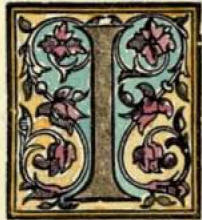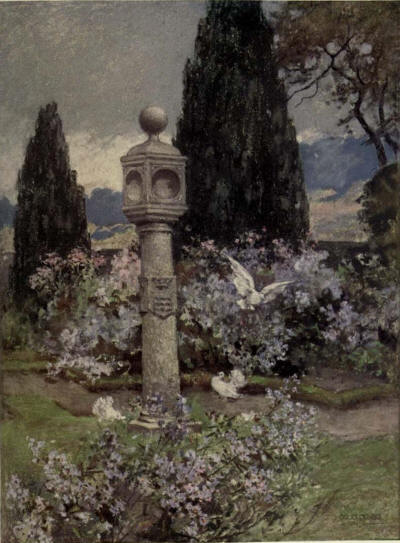|
 N
one respect the beautiful house of Stobhall impresses one with
melancholy. It is a. notable and commendable example of the manner in
which ancient architecture should be preserved from the ravages of our
most edacious climate; but it is no longer "a home," except for the
caretaker, whose presence only seems to accentuate the silence which
reigns undisputed where of old - N
one respect the beautiful house of Stobhall impresses one with
melancholy. It is a. notable and commendable example of the manner in
which ancient architecture should be preserved from the ravages of our
most edacious climate; but it is no longer "a home," except for the
caretaker, whose presence only seems to accentuate the silence which
reigns undisputed where of old -
"Joy was within and joy
without,
Vnder that wlonkest waw [splendid wall],
Quhair Tay run down with stremis stout
Full strecht vuder Stobschaw."
The lands of Stobhall
were granted by Robert the Bruce to Sir Malcolm Drummond after the great
victory of Bannockburn, when so many of English Edward's barons were
dispossessed of their estates in Scotland. It was the birthplace of Sir
Malcolm's great-granddaughter, Annabella, who became Queen of Scots by
her marriage with Robert III. It has descended through a long line of
Drummonds to its

present owner, the Earl
of Ancaster, whose abode is in Strathearn, at Drummond Castle, famous
for its architectural garden and terraces. Some might deem that garden
more worthy than Stobhall of a place in this series, but it has been
made the subject of so many essays and illustrations that we have given
preference to the lonely and less well-known house in Strathtay.
In truth, there is little
that can be called a garden at Stobhall, only the place once bright with
summer flowers, whereof a few, such as the grey asters in Miss Wilson's
picture, have clung to the soil, marking the change of seasons as the
old sundial does the fleeting hours, till hours and seasons together
roll up into centuries. Perhaps the place is fairer in its desolation
than it ever was when it teemed with busy life. Certes, it would be
difficult to find in all Scotland a more enchanting scene than I beheld
one May morning on visiting this spot. The pearl-grey walls of the old
house gleamed softly in the sunshine, deeply mantled in the fresh
verdure of sycamore and beech. Steeply sloped the greensward to the
river, starred and wreathed with late narcissus, purple orchis, and
myriad humbler blooms. Far below where I stood, the Tay, lordliest of
Scottish rivers, swept in smooth curves, shimmering in the light,
glowering in the shade, to fling itself in sudden tumult over the Linn
o' Campsie. And all around, far as the eye could range, was wealth of
woodland, ancient trees and affluent tillage. What a paradise of flowers
might be created here! which, after all, is but a sorry pretext for
including among Scottish gardens a place where a garden was, but is not.
Our excuse is that Stobhall remains in its desolation one of the most
fascinating places in the realm.
Those who are curious in
architecture will find in the buildings interest that they miss in the
garden. As at Barneluith, instead of a single mansion there is a group
of detached dwellings, the oldest and chief of them bearing the date
1578, and containing a remarkable chapel and rooms for priests. The
ceiling of the chapel is in five compartments, each painted with figures
on horseback, except one, which represents Rex Mauritanae mounted on an
elephant. This decoration, coupled with the profusion of heraldic
devices and the repetition Drummond motto GANG. WARILY, recalls the
coloured roofs of the Chateau de Blois, with the everlasting salamander
of Francois Ir. One cannot be too grateful to the family which has so
faithfully preserved this choice example of the Scottish renaissance. |
